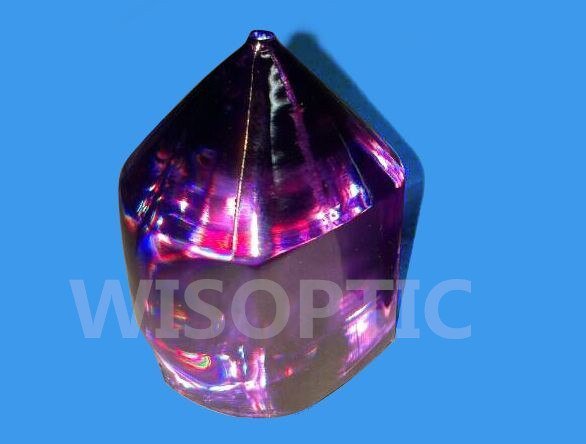Lasers with a high repetition rate and a narrow pulse width have attracted considerable attention due to their extensive applications such as micromachining, laser ranging, remote sensing, medical treatment, etc. A common way to realize such pulsed lasers is to Q-switch a diode-pumped solid state oscillator. The Q-switching can be classified into passive and active types. The passive Q-switching is beneficial to achieve narrow pulse width owing to the absence of additional polarizing optical elements. Unfortunately, its poor stability has limited its applications in many fields. Active Q-switching enables a stable pulse energy and low temporal jitter at the repetition rate. There are two main active Q-switch modes, the Acousto-Optic (AO) and the Electro-Optic (EO) Q-switching. The AO Q-switching is limited in many applications because of its tendency to produce a long pulse. Compared with AO Q-switching, EO Q-switching has the advantages of better hold-off ability and faster switching rate, which enable the production of much shorter pulses.
Recently, several EO crystals such as β-BBO, RTP, periodically poled LiNbO3 (PPLN) (www.wisoptic.com), LGS have been significantly investigated, and high repetition rate Q-switched lasers based on these EO crystals have been achieved. In 2010, researchers demonstrated a 532 nm green laser with a repetition rate of 10 kHz and a pulse width of 58.5 ns by using a BBO crystal as the EO Q-switch and a LBO crystal for frequency doubling. In 2013, researchers reported a RTP EO Q-switched Nd:GdVO4 laser with a repetition rate as high as 280 kHz and a pulse width of 18.4 ns. In 2003, a novel EO-Q-switch based on PPLN crystal was reported, the maximum repetition rate of the pulsed laser is 7 kHz with a pulse width of 12 ns and a peak power of 0.74 kW. Recently, researchers reported a LGS Q-switched laser operating at a repetition rate of 200 kHz with a pulse width of only 5.1 ns. However, some intrinsic problems limit their further engineering applications, such as the small EO coefficient of BBO, the low-symmetry structure and natural birefringence of RTP, the difficulty of achieving uniform periodic structure of PPLN and the optical activity of LGS.
LiNbO3 (LN) crystal is one of the few EO crystals that have been practical applications. It has the advantages of large EO coefficient, broad spectral range, low insert loss, no water solubility in air, etc. Additionally, LN crystals can operate stably in a wide temperature range. Unfortunately, LN cannot be run a repetition rates exceed 1 kHz. The piezoelectric ringing effects, though much influenced by the piezoelectric coefficient, is also influenced by the applied electro-field. Researchers had demonstrated a fast Q-switched laser with a repetition rate of 7 kHz by using a low-voltage PPLN crystal, and it was found that the low switching voltage together with the use of a high-gain laser medium has helped to reduce the transient elasto-optic ringing effects. Thus, motivation is provided to design a low-voltage LN PC and investigate its Q-switching performance in high repetition rate lasers. For a LN PC in a transverse configuration, the quarter-wave voltage can be effectively reduced by enlarging the aspect ratio.
In consideration of the small intracavity beam size of most typical diode-pumped laser cavities, a miniaturized LN PC with a low Quarter-wave Voltage (QWV) was prepared. The piezoelectric ringing effect in the miniaturized LN PC is investigated, and it is compared with those of a block LN PC and a RTP PC. The results indicate that the piezoelectric ringing effect in the miniaturized LN PC is negligible. Besides, the piezoelectric ringing effect is found to be influenced by the applied voltage and the piezoelectric resonance frequency of PCs. The high repetition rate Q-switching performance of the miniaturized LN PC is researched in a LD-pumped solid state oscillator with a Nd:YVO4 crystal as the gain medium. A stable pulsed laser operating at a repetition rate of 15 kHz with pulse width of 5.4 ns and peak power of 2.94 kW is obtained, which represents the highest repetition rate and minimum pulse width achieved so far in a LN Q-switched laser.
High quality Nd:YVO4 crystal developed by WISOPTIC
Post time: Jun-01-2022

